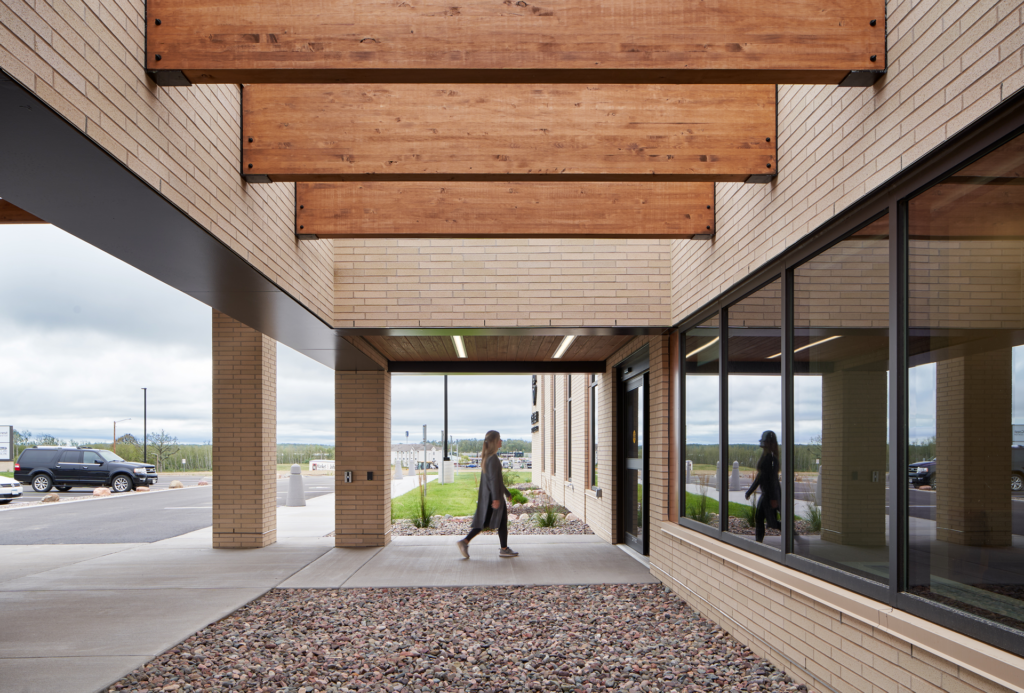Quality assurance is all about dotting the i’s and crossing the t’s, confirming that design details meet code regulations, stakeholder requirements, and quality standards. Architectural projects come in all different shapes, sizes, and complexities, and each one requires an intricate eye for detail.
Joining us today is BWBR Principal and Director of Professional Services Dan Hottinger, who specializes in projects with highly technical requirements and logistical challenges, and Senior QA Specialist Todd Warren. Both bring a wealth of construction and documentation knowledge to the table, along with over two decades of experience at the firm.
In this latest episode of Side of Design, they dive into the QA process at BWBR, outlining the steps, the stakes, and how we measure success following construction.
Step by Step
You may be thinking that quality assurance sounds like a huge responsibility, and while that’s true, there are resources and support structures in place to guide our design teams to success. Todd admits that the process can appear daunting at first glance. It’s two full pages of steps — and that’s just the outline. However, it’s meant to act as a roadmap for BWBR’s process.
Todd explains that there are seven different QA meetings recommended for every project, including a kickoff performance design meeting to outline sustainability goals, a project initiation meeting to help connect teams with resources for knowledge-sharing, and a code conformance check. Some specialized or large projects require even more steps – the process is customized to provide the best results and lowest margin of error.
After numerous check-ins throughout the design phases, a final review meeting helps our specialists confirm that no mistakes slipped through the cracks before documents go out the door. “I try to look at it as if I’m the contractor. Can I understand everything? Can I picture how we’re going to build this?” says Todd.
The Stakes are High
“Reputation is easy to destroy,” Dan says. “It can happen with one single project, and it takes a long time to regain.” He cites the example of automakers in the 1960s and 1970s that intentionally built cars designed to break down after a few years so consumers would be forced to repurchase. That worked — until other automakers joined the market and built cars to actually last. It seriously damaged their reputation, and many of the brands that survived are still working to earn a reputation for reliability decades later.
“On many projects I hear tales from clients or owners who had a terrible experience with the last architect, and I think it’s a warning to us that we have to do better. The reason they didn’t pick that architect again is because of that bad experience,” says Todd. Word of mouth spreads, and it’s an important lesson on the significance of thorough QA.
At BWBR, our aim is to go beyond just protecting our reputation to provide exceptional quality work for our clients. As Dan explains, errors slow down construction and increase costs, so carefully proofing and coordinating design documents pays off in a smooth and seamless experience for everyone involved.
Hard Work Pays Off
So, how does the QA team measure the success of their work? Dan explains that repeat clients are a great sign of a smooth construction process and high-quality finished product. “An 85% repeat client rate is a really good target, and we consistently exceed that. Since 2019, we’ve been holding at about 94%. That is amazing, and it speaks to the quality of the experience out in the field,” he says.
BWBR’s goal is to prioritize care, precision, and efficiency, creating partnerships that last for the long run. Our amazing quality assurance team plays a major role in making it all happen, and we’re so grateful for their incredible attention to detail and hands-on approach!








